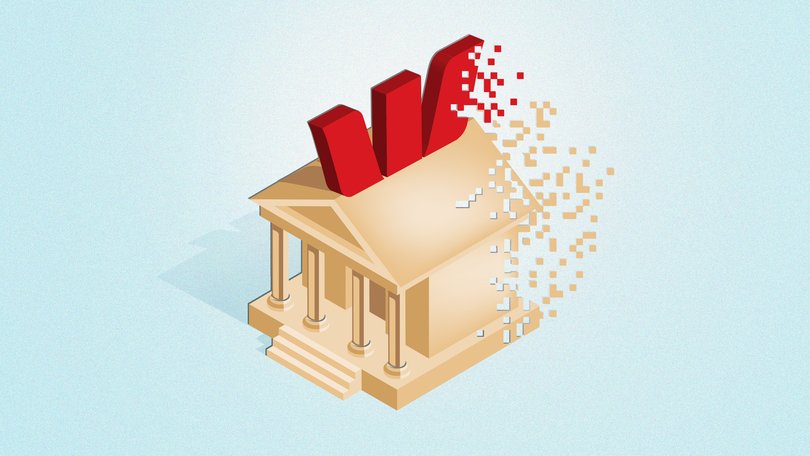Westpac defends shift away from branches with latest Big 4 Bank taking tellers out and putting apps in

Westpac bank will roll out a “digital first” strategy across all branches this financial year at the cost of at least 200 tellers’ jobs.
The tellers will be replaced with branch “concierges” to explain to customers how to use automatic teller machines and advanced features on the bank’s mobile phone app.
The Financial Sector Union said the decision was a “callous and short-sighted” move that will further erode vital face-to-face services as the bank puts profit before jobs.
Sign up to The Nightly's newsletters.
Get the first look at the digital newspaper, curated daily stories and breaking headlines delivered to your inbox.
By continuing you agree to our Terms and Privacy Policy.“Communities still rely on face-to-face banking and workers should not be sacrificed for cost-cutting dressed up as innovation,” Finance Sector Union national secretary Julia Angrisano said.
In an email to Westpac’s retail banking staff on September 22, the bank’s General Manager for Retail Banking, Damien Macrae, said an extra 200 jobs for home loan and small business bankers will be created.
“This year we’ve invested in our digital first strategy to support our customers’ changing needs and our digital citizens focus,” he wrote. “We will also invest $5 million in capability and training in FY26 to help you to grow your career at Westpac. We’re making these investments because we recognise the nature of the work we do is changing.”
Future of cash, branches
All the big banks are cutting staff as they close physical branches, a consequence of the decline of cash and the use of online banking.
In September, ANZ said it would cut 4,500 workers. Westpac chopped 1,500 staff in May. National Australia Bank announced 410 job cuts this month. The smaller regional lenders, Bank of Queensland and Bendigo Bank, also announced restructures or redundancy rounds linked to cost cuts.
Brad Kelly, a 30-year banking industry veteran and the managing director of consultancy Payment Services, said the cuts show the banks are under pressure from shareholders to lower costs and lift profits, although physical branches and cash will, almost certainly, never disappear.
“In Australia, we’re at 13 per cent cash usage (versus digital) and that’s pretty steady, I don’t think it will change,” Mr Kelly said.
“The banks have a social contract that they’ll provide services to Australians, and there’s still 1.5 million people in Australia who rely on cash. If you live somewhere like Elizabeth Bay in Sydney you might think people only use Amex and cards, but go to Western Sydney and cash is still very popular, especially among immigrant communities.”
50 per cent cut in ATMs
According to industry body The Australian Banking Association, there were 3,360 operating bank branches in September 2024 and 23,693 automated teller machines (ATMs).
The Reserve Bank said 240 branches closed in the 2023-24 financial year, and the number of cash access points (including ATMs and branches) declined by 50 per cent between 2011 and 2024.
As of June 2024, the RBA said 95 per cent of Australians lived within 4 kilometres of an identified cash access withdrawal point, although a quarter of the branch closures over the year to June 2024 were in country areas.
“But physical bank branches always need to exist for the elderly and small businesses especially,” Mr Kelly said.
“Something that really annoys (Commonwealth Bank CEO) Matt Comyn is the fact that banks like ING and Up don’t have branches and consumers go into CBA branches and put their cash in, but then immediately transfer it to the digital banks for a better interest rate.
“So he (Mr Comyn) gets pissed off, as CBA’s being used as a pseudo-branch for these digital-only banks.”

